This article provides a guide to Edge Computing in 2021. Recently, industry investment and research interest in Edge Computing have grown dramatically. Computing at the Edge moves computing and storage from the Cloud to the Internet’s edge near mobile devices or sensors.
Hence, Edge Computing makes it possible to deliver highly responsive services for mobile computing, scalability, and privacy-policy enforcement of Big Data-based AI processing at the Edge.
What is Edge Computing?
Edge computing is a new paradigm that performs computing at the edge of the network. As opposed to cloud computing, edge computing moves closer to the user and closer to the source of data. At the edge of the network, it is lightweight for local, small-scale data storage and processing.
Edge Computing will be 100x what public Cloud is. Michael Dell
With the rapid development of the Internet of Everything (IoE), the number of smart devices connected to the Internet is growing fast, generating large-scale data (Big Data) at the network edge. The massive amount of data causes problems such as bandwidth load, slow response speed, poor security, and poor privacy in traditional cloud computing models.
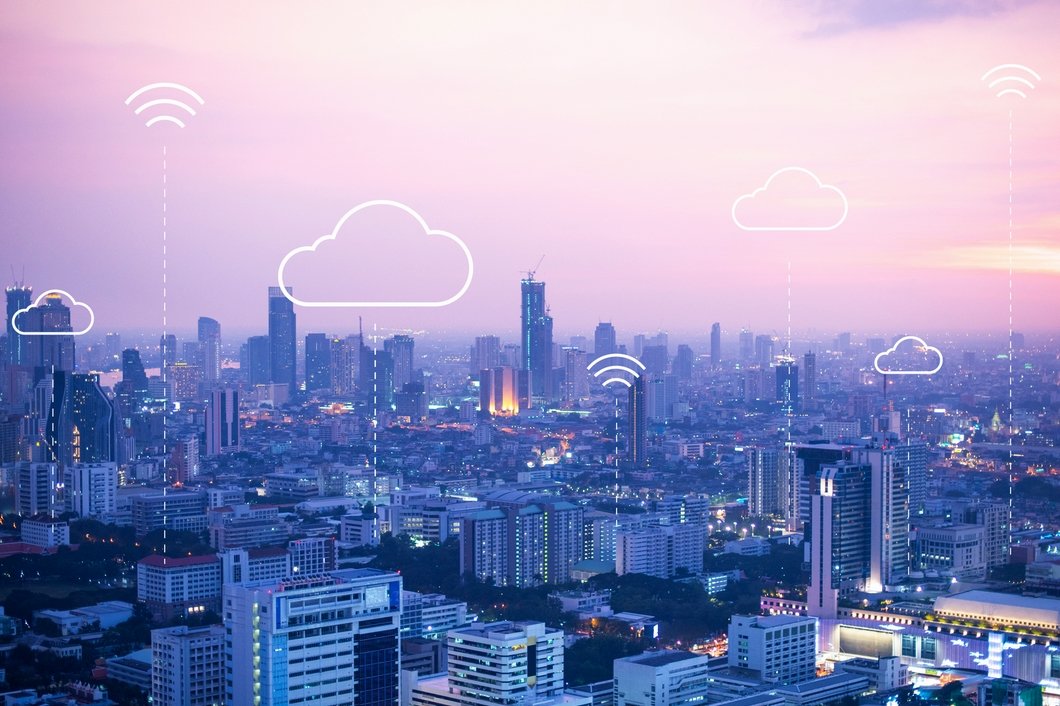
Hence, traditional cloud computing is no longer sufficient to support today’s requirements for smart services and intelligent data processing, so edge computing technologies have emerged.
Edge computing directs computational data, applications, and services away from cloud servers to the edge of a network. As a result, application developers can use the on-device computing systems by offering the users services closer to them. Edge computing is characterized in terms of high bandwidth, ultra-low latency, and real-time access to network information that can be used by several applications.
Therefore, edge computing is the foundation of next-generation Edge Intelligence, the deployment of machine learning algorithms to the edge device where the data is generated.
Edge Computing Definition
Since edge computing work has become a research hotspot, there are different definitions. Satyanarayanan, a professor at Carnegie Mellon University, defines Edge Computing as “a new computing model that deploys computing and storage resources (such as cloudlets, micro data centers, or fog nodes, etc.) at the edge of the network closer to mobile devices or sensors.”
China’s Edge Computing Consortium defines Edge Computing as “near the edge of the network or the source of the data, an open platform that integrates core capabilities such as networking, computing, storage, applications, and provides edge intelligent services nearby to meet the industry agility key requirements in connection, real-time business, data optimization, application intelligence, security, and privacy.”
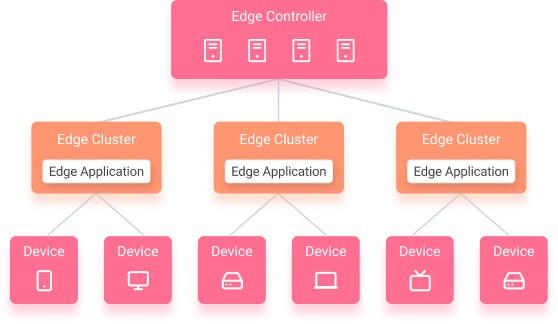
Zha provides the following definition: “Edge computing is a new computing model that unifies resources that are close to the user in geographical distance or network distance to provide computing, storage, and network for application services.”
Background and Need For Computing at the Edge
Today’s intelligent society is driven by the need for smart and connected services across various industries. Edge devices have spread to all aspects of society, such as smart homes, surveillance cameras, autonomous vehicles, intelligent production robots, and more. As a result, the number of connected devices is constantly increasing.
Therefore, the amount of data generated by devices worldwide is drastically increasing. Based on the continuous and massive growth of the volume of data and various data processing requirements, cloud-based big data processing has shown many shortcomings:
- Real-time: The transmission of large amounts of data to the cloud results in a large load on network transmission bandwidth, resulting in data transmission delay. Cloud computing will not be able to meet real-time business requirements.
- Energy consumption: The computational power of central data centers has increased significantly, requiring more energy and resources. Cloud computing is not able to meet the increasing demand for optimized energy consumption.
- Security and privacy: Uploading the data to the cloud and storing it in a centralized environment comes with privacy leakage risks or attacks. The probability of data en-route attacks is higher in cloud computing than in edge computing, caused by the longer path to the server.
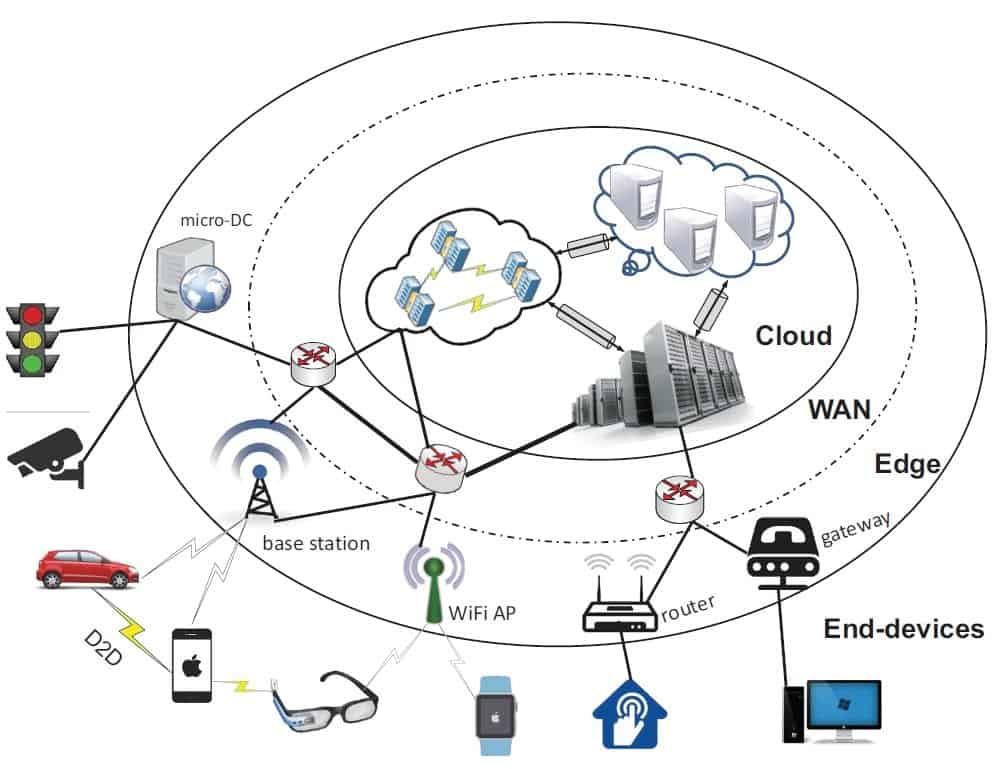
Therefore, edge computing technology aims to provide services and perform computations at the edge of the network and data generation. The goal of edge computing is to migrate the cloud’s network, computing, storage capabilities, and resources to the edge of the network and provide intelligent services.
This is required to meet the critical needs of the IT industry in real-time business, application intelligence, data optimization, security, and privacy, and to meet the requirements of low latency and high bandwidth on the network.
Differences of Edge vs. Cloud Computing
Traditional cloud computing transfers all data to the cloud computing center through the network and solves the computing and storage problems in a centralized way. However, the emergence of edge computing will not replace cloud computing.
The two concepts complement each other, enabling the digital transformation of industries to a greater extent. Edge is an advanced version of cloud computing that reduces latency by bringing the services close to the end users. In addition, it minimizes the load of the cloud by providing resources and services in the Edge network.
In some Internet services, some data needs to be returned to the cloud for processing after being processed by edge computing, such as in-depth analysis of data mining and sharing, which requires the cooperation of both concepts.
The main differences between cloud and edge computing are the following:
- Cloud: The main feature of cloud computing is that it can process a large amount of data, conduct in-depth analysis, and play an important role in non-real-time data processing, such as business decision-making and other fields.
- Edge: Focuses on the local (on-device). Therefore, it can play a better role in small-scale, real-time intelligent analysis, such as meeting the real-time needs of distributed services.
At this time, edge computing is required to share the pressure of the cloud and take charge of tasks within its scope of the edge. In addition, local data processing reduces the risk of large-scale data loss. Those factors bring stability to services that include connected devices in a network (IoT).
What is Fog Computing?
Fog Computing was introduced by CISCO in 2012 and was defined as “a highly virtualized platform that provides compute, storage, and networking services between end devices and traditional cloud computing Data Centers, typically, but not exclusively, located at the edge of the network.”
The OpenFog Consortium definition of Fog Computing is “a system-level horizontal architecture that distributes resources and services of computing, storage, control, and networking anywhere along the continuum from Cloud to Things, thereby accelerating the velocity of decision-making.”
Hence, Fog Computing is a concept where a huge number of heterogeneous, ubiquitous, and geographically distributed devices communicate with the network to perform storage and processing tasks without the intervention of third parties. These tasks can support basic network functions or new services and applications that run in an isolated environment.
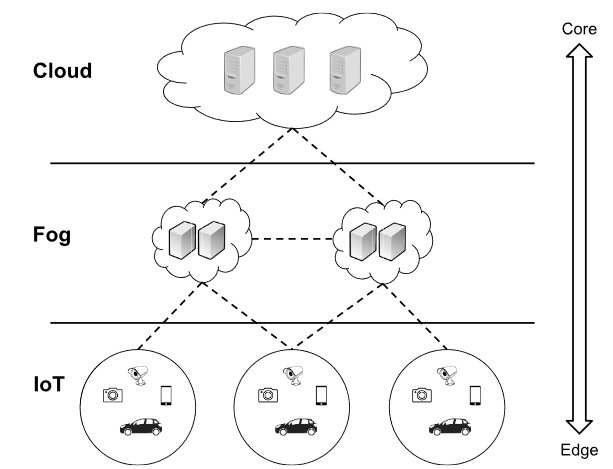
Fog Computing is a smart extension of cloud computing aimed at bridging the gap with IoT devices. Therefore, Fog computing should not be seen as a replacement for the traditional Cloud architecture, but rather as a new architecture that brings IoT, Edge, and Cloud together.
Edge Computing Characteristics
Edge computing possesses several characteristics similar to cloud computing, but extends the cloud by its specific architecture:
- Geographical Distribution: IoT applications based on sensor networks highly benefit from processing data locally through edge computing platforms. Big data analytics can be performed rapidly with better accuracy. Edge systems enable real-time analytics and AI processing on a large scale. Examples include sensor networks to monitor the environment, for example, pipeline monitoring or collision avoidance systems.
- Mobility Support: As the number of mobile devices is rapidly growing, edge computing also supports mobility to communicate directly with mobile devices.
- Location Awareness: Allows the use of technologies such as GPS to find the location of devices. Hence, location awareness can be used by Edge computing applications such as Fog-based vehicular safety applications and edge-based disaster management.
- Proximity: The availability of the computational resources and services in the local vicinity allows the users to leverage the network context information for making offloading decisions and service usage decisions.
- Low Latency: The low latency of edge computing enables users to execute their resource-intensive and delay-sensitive applications on the edge device. Such applications include connected vehicles, remote health monitoring, warehouse logistics, and industrial control systems.
- Heterogeneity: Refers to the existence of different platforms, architectures, computing, and communication technologies used by the elements (end devices, servers, and networks).
- Bandwidth Intensive Use Cases: An increasing amount of data generated by IoT deployments today is bandwidth-intensive, especially the data from video surveillance cameras (video analytics). Placing computational resources as close as possible to high-bandwidth data sources implies that much less data needs to be sent to distant cloud data centers. For instance, videos and sensor data from hazardous locations can be processed locally to provide real-time information to responders in public safety applications.
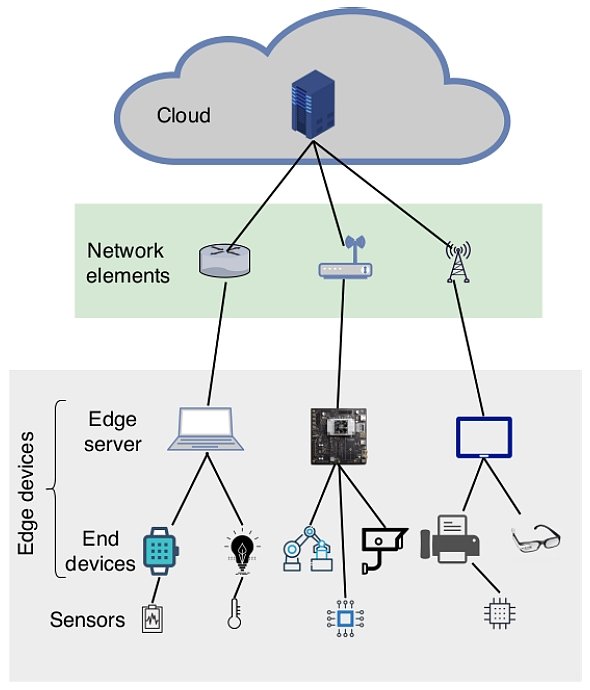
Benefits of Edge Computing
Edge computing systems store and process data collected locally on devices without uploading it to a cloud computing platform. This comes with several important advantages to lowering the pressure of network bandwidth and other disadvantages of cloud computing.
- Performance: Edge computing technology offers fast data processing and analysis, and fast response speed enabling real-time services. It provides users with a variety of fast response services, especially in automatic driving intelligent manufacturing, video monitoring, and other location awareness; rapid feedback is critical. For example, real-time computer vision applications.
- Privacy and Security: The centralized approach of traditional cloud computing requires all data to be uploaded to the cloud for unified processing. Therefore, cloud-based processing exposes significant risks of data loss and data leakage. Edge computing is based on local data, and there is no need to upload data to the cloud, which avoids the risks brought by network transmission. As a result, attacks and failures only affect local data, not the entire dataset. On-device computing and AI inference make it possible to guarantee data security. Furthermore, on-device computing is distributed for the training of AI models, named Federated Learning.
- Efficiency: On-device computing reduces the amount of data transmitted on the network, reduces the transmission cost and network bandwidth pressure, reduces the energy consumption of local equipment, and improves computing efficiency. Edge computing drives the development of highly efficient AI hardware such as deep learning accelerators (e.g., Vision Processing Units).
- Reliability: Edge technology provides methods to make services more stable, robust, and highly accessible. The high reliability of connected on-device systems is especially important in mission-critical applications that are vulnerable to network disconnections, which may lead to fatal consequences (e.g., medical monitoring or transportation systems).
Edge Computing Use Cases
- Environmental Monitoring in Remote Locations: By deploying IoT sensors and edge devices equipped with edge computing capabilities, environmental data is collected, processed, and analyzed locally. This makes it possible to monitor ecological conditions, biodiversity conservation efforts, and early detection of environmental changes or threats in remote and inaccessible areas.
- Precision Agriculture: IoT sensors, drones, and edge devices equipped with edge computing capabilities can measure agricultural data to make data-driven decisions in real time, making edge computing important for improved crop productivity and sustainability.
- Disaster Response and Humanitarian Aid: Edge computing for disaster response and humanitarian aid operations provides critical support and assistance in crises. In disaster-affected areas, emergency responders and aid organizations can establish local command centers, coordinate rescue efforts, and deliver essential services, even in remote or infrastructure-poor environments.

What’s Next With Edge Computing?
Edge computing envisions bringing services and utilities of cloud computing closer to the end-user to ensure fast processing of data-intensive applications.
Learn more about related topics:
- Top Computer Vision Smart City Applications
- Read about Edge AI – connecting Edge Computing with AI.
- A walk-through of Edge Intelligence, smart services at the Edge
- The concept of Self-supervised Deep Learning
- Learn about Federated Learning to train ML models at the Edge
Resources:
